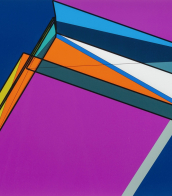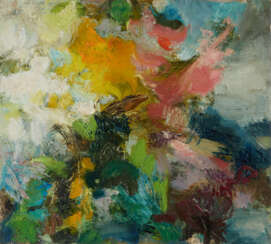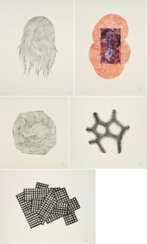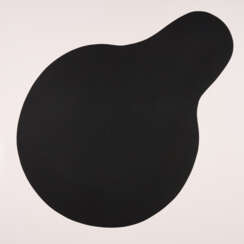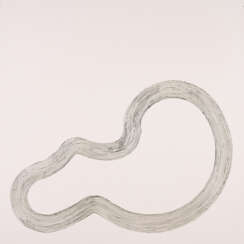Richard Deacon (1949) — Auction price

Richard Deacon is a Welsh sculptor. He is known for his abstract sculptures that explore the relationships between form, space, and materials.
Deacon initially studied at the Somerset College of Art in Taunton before going on to study at the Central Saint Martins College of Art and Design and the Royal College of Art in London. He began his career as a sculptor in the 1970s and has since become one of the most prominent British sculptors of his generation.
Deacon's sculptures are often made from materials such as laminated wood, steel, and ceramics, and take on a wide range of forms, from organic and biomorphic to geometric and architectural. He is known for his use of curves, lines, and bold colors, as well as his exploration of negative space and the relationship between objects and the space around them.
Deacon has exhibited widely throughout the world, including at the Tate Gallery in London, the Museum of Contemporary Art in Los Angeles, and the Guggenheim Museum in New York. He has been awarded numerous honors for his work, including the Turner Prize in 1987 and a CBE in 1999.
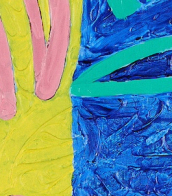

Richard Deacon is a Welsh sculptor. He is known for his abstract sculptures that explore the relationships between form, space, and materials.
Deacon initially studied at the Somerset College of Art in Taunton before going on to study at the Central Saint Martins College of Art and Design and the Royal College of Art in London. He began his career as a sculptor in the 1970s and has since become one of the most prominent British sculptors of his generation.
Deacon's sculptures are often made from materials such as laminated wood, steel, and ceramics, and take on a wide range of forms, from organic and biomorphic to geometric and architectural. He is known for his use of curves, lines, and bold colors, as well as his exploration of negative space and the relationship between objects and the space around them.
Deacon has exhibited widely throughout the world, including at the Tate Gallery in London, the Museum of Contemporary Art in Los Angeles, and the Guggenheim Museum in New York. He has been awarded numerous honors for his work, including the Turner Prize in 1987 and a CBE in 1999.
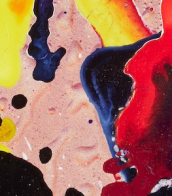

Richard Deacon is a Welsh sculptor. He is known for his abstract sculptures that explore the relationships between form, space, and materials.
Deacon initially studied at the Somerset College of Art in Taunton before going on to study at the Central Saint Martins College of Art and Design and the Royal College of Art in London. He began his career as a sculptor in the 1970s and has since become one of the most prominent British sculptors of his generation.
Deacon's sculptures are often made from materials such as laminated wood, steel, and ceramics, and take on a wide range of forms, from organic and biomorphic to geometric and architectural. He is known for his use of curves, lines, and bold colors, as well as his exploration of negative space and the relationship between objects and the space around them.
Deacon has exhibited widely throughout the world, including at the Tate Gallery in London, the Museum of Contemporary Art in Los Angeles, and the Guggenheim Museum in New York. He has been awarded numerous honors for his work, including the Turner Prize in 1987 and a CBE in 1999.


Richard Deacon is a Welsh sculptor. He is known for his abstract sculptures that explore the relationships between form, space, and materials.
Deacon initially studied at the Somerset College of Art in Taunton before going on to study at the Central Saint Martins College of Art and Design and the Royal College of Art in London. He began his career as a sculptor in the 1970s and has since become one of the most prominent British sculptors of his generation.
Deacon's sculptures are often made from materials such as laminated wood, steel, and ceramics, and take on a wide range of forms, from organic and biomorphic to geometric and architectural. He is known for his use of curves, lines, and bold colors, as well as his exploration of negative space and the relationship between objects and the space around them.
Deacon has exhibited widely throughout the world, including at the Tate Gallery in London, the Museum of Contemporary Art in Los Angeles, and the Guggenheim Museum in New York. He has been awarded numerous honors for his work, including the Turner Prize in 1987 and a CBE in 1999.
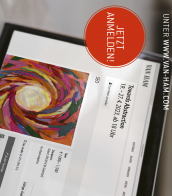

Richard Deacon is a Welsh sculptor. He is known for his abstract sculptures that explore the relationships between form, space, and materials.
Deacon initially studied at the Somerset College of Art in Taunton before going on to study at the Central Saint Martins College of Art and Design and the Royal College of Art in London. He began his career as a sculptor in the 1970s and has since become one of the most prominent British sculptors of his generation.
Deacon's sculptures are often made from materials such as laminated wood, steel, and ceramics, and take on a wide range of forms, from organic and biomorphic to geometric and architectural. He is known for his use of curves, lines, and bold colors, as well as his exploration of negative space and the relationship between objects and the space around them.
Deacon has exhibited widely throughout the world, including at the Tate Gallery in London, the Museum of Contemporary Art in Los Angeles, and the Guggenheim Museum in New York. He has been awarded numerous honors for his work, including the Turner Prize in 1987 and a CBE in 1999.
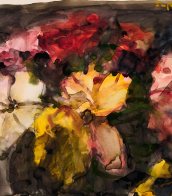

Richard Deacon is a Welsh sculptor. He is known for his abstract sculptures that explore the relationships between form, space, and materials.
Deacon initially studied at the Somerset College of Art in Taunton before going on to study at the Central Saint Martins College of Art and Design and the Royal College of Art in London. He began his career as a sculptor in the 1970s and has since become one of the most prominent British sculptors of his generation.
Deacon's sculptures are often made from materials such as laminated wood, steel, and ceramics, and take on a wide range of forms, from organic and biomorphic to geometric and architectural. He is known for his use of curves, lines, and bold colors, as well as his exploration of negative space and the relationship between objects and the space around them.
Deacon has exhibited widely throughout the world, including at the Tate Gallery in London, the Museum of Contemporary Art in Los Angeles, and the Guggenheim Museum in New York. He has been awarded numerous honors for his work, including the Turner Prize in 1987 and a CBE in 1999.


Richard Deacon is a Welsh sculptor. He is known for his abstract sculptures that explore the relationships between form, space, and materials.
Deacon initially studied at the Somerset College of Art in Taunton before going on to study at the Central Saint Martins College of Art and Design and the Royal College of Art in London. He began his career as a sculptor in the 1970s and has since become one of the most prominent British sculptors of his generation.
Deacon's sculptures are often made from materials such as laminated wood, steel, and ceramics, and take on a wide range of forms, from organic and biomorphic to geometric and architectural. He is known for his use of curves, lines, and bold colors, as well as his exploration of negative space and the relationship between objects and the space around them.
Deacon has exhibited widely throughout the world, including at the Tate Gallery in London, the Museum of Contemporary Art in Los Angeles, and the Guggenheim Museum in New York. He has been awarded numerous honors for his work, including the Turner Prize in 1987 and a CBE in 1999.


Richard Deacon is a Welsh sculptor. He is known for his abstract sculptures that explore the relationships between form, space, and materials.
Deacon initially studied at the Somerset College of Art in Taunton before going on to study at the Central Saint Martins College of Art and Design and the Royal College of Art in London. He began his career as a sculptor in the 1970s and has since become one of the most prominent British sculptors of his generation.
Deacon's sculptures are often made from materials such as laminated wood, steel, and ceramics, and take on a wide range of forms, from organic and biomorphic to geometric and architectural. He is known for his use of curves, lines, and bold colors, as well as his exploration of negative space and the relationship between objects and the space around them.
Deacon has exhibited widely throughout the world, including at the Tate Gallery in London, the Museum of Contemporary Art in Los Angeles, and the Guggenheim Museum in New York. He has been awarded numerous honors for his work, including the Turner Prize in 1987 and a CBE in 1999.
